🇳🇿 Traditional Maori Culture in New Zealand: Experiencing the Haka and More 🌿
Discover the Rich Heritage of Maori Culture in New Zealand
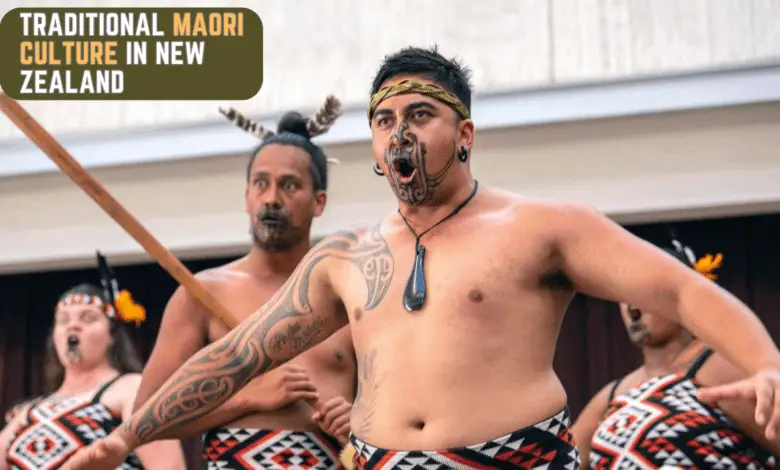
Introduction
New Zealand, with its breathtaking landscapes and diverse culture, is a destination that has captured the hearts of travelers worldwide. While its natural beauty is undeniable, what truly makes New Zealand a standout destination is its rich cultural heritage, particularly the traditional Maori culture.
In this article, we invite you on a journey through the heart of Aotearoa, where you’ll have the opportunity to experience the power of the Haka, explore the intricacies of Maori art, and understand the importance of Marae, the beating heart of Maori communities. Join us as we delve into the traditions, values, and experiences that define traditional Maori culture in New Zealand.
Understanding Maori Culture
1. Historical Background of the Maori People
The Maori people are the indigenous Polynesian inhabitants of New Zealand, known for their rich history and vibrant culture. Their arrival in New Zealand is estimated to have occurred around the 13th century, making them relatively recent settlers in comparison to other indigenous cultures around the world. Legend has it that the Maori ancestors arrived on waka (canoes) from Hawaiki, their ancestral homeland.
The early Maori society was tribal, with different iwi (tribes) inhabiting various regions of New Zealand. Each iwi had its own distinct traditions, leaders, and territories. Conflict and warfare were not uncommon as different iwi competed for resources and land.
One significant event in Maori history was the signing of the Treaty of Waitangi in 1840, which established British sovereignty over New Zealand while guaranteeing Maori certain rights and protections. However, interpretations and implementations of the treaty have been a source of contention and dispute between Maori and the New Zealand government for many years.
2. Key Aspects of Maori Culture
- Language: Te Reo Māori, the Maori language, is a central pillar of Maori culture. It is an official language in New Zealand and is taught in schools and universities. Efforts have been made to revive and preserve the language, as it faced a decline in the past. Today, many Maori place names and expressions are commonly used throughout New Zealand.
- Art and Carving: Maori art is renowned for its intricate carvings, especially in wood and stone. These carvings often depict ancestral figures, stories, and tribal history. The designs are not only aesthetically pleasing but also carry deep spiritual and cultural significance.
- Tattooing (Ta moko): Maori tattoos, known as ta moko, are a form of body art that has been practiced for centuries. Each tattoo is unique and tells the individual’s life story, lineage, and tribal affiliations. It’s not merely decorative; it’s a visual representation of one’s identity.
- Spirituality: Maori spirituality is deeply connected to nature, and they have a strong belief in ancestral spirits and gods. The concept of mana, a spiritual force or power, is integral to their worldview. Traditional ceremonies, such as powhiri (welcome ceremonies) and haka (war dances), are still performed today, often in ceremonial and sporting events.
- Whanau and Whakapapa: Family and genealogy hold great importance in Maori culture. Whanau (family) is the cornerstone of their society, and whakapapa (genealogy) is used to trace one’s ancestry back to their Maori roots, connecting them to their land and heritage.
Understanding the historical background and key aspects of Maori culture is essential for appreciating the depth and richness of this indigenous culture in New Zealand. It’s a culture that continues to thrive and evolve, embracing both traditional values and contemporary influences.
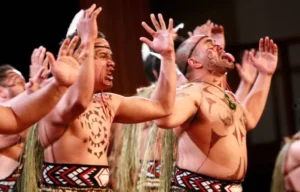
The Haka: A Powerful Maori Tradition
→ What is the Haka?
The Haka is a traditional Maori dance that holds a unique and revered place in Maori culture. It is a powerful and dynamic performance characterized by rhythmic chanting, stomping, fierce facial expressions, and exaggerated body movements. The Haka is a form of ancient Maori war dance, but it serves various purposes beyond its historical roots. It is typically performed by a group, with participants often yelling, grunting, and slapping their chests as part of the intense display.
→ Significance of the Haka in Maori culture
The Haka is deeply significant in Maori culture, symbolizing a range of emotions and sentiments. Its primary functions include expressing respect, acknowledging achievements, welcoming guests, and asserting tribal identity. In traditional settings, the Haka was used to intimidate enemies before battle, showcasing the warriors’ strength, unity, and determination.
Moreover, the Haka is a means of connecting with ancestral spirits and paying homage to Maori ancestors. It serves as a cultural touchstone, instilling a sense of pride, identity, and belonging among Maori communities. Even today, the Haka is performed at various events, including weddings, funerals, and cultural ceremonies, to commemorate significant moments and convey deep emotions. Read more about the post on Wikipedia.org!
→ Different types of Haka and their purposes
- Ka Mate: Perhaps the most famous Haka globally, Ka Mate was composed by the Maori chief Te Rauparaha. It is performed to celebrate victory and achievement and is often seen before sporting events, symbolizing determination and triumph over adversity.
- Kapa Haka: This is a broader term encompassing various types of Maori performing arts, including song and dance. Kapa Haka competitions showcase the diversity of Maori culture and talent. Groups perform both traditional and contemporary compositions.
- Whakatu waewae: This Haka is performed to welcome guests and acknowledge their presence with respect. It’s a way of showing hospitality and making visitors feel honored and valued.
- Ngeri: This intense and aggressive Haka is typically reserved for more somber occasions, such as funerals. It expresses grief and mourning, serving as a farewell to loved ones.
→ How to experience the Haka in New Zealand
To truly experience the power and beauty of the Haka in New Zealand, there are several options:
- Cultural Performances: Many Maori cultural centers and tourist attractions offer live Haka performances. These interactive experiences provide insights into the history and significance of the Haka.
- Sports Events: The Haka is frequently performed by New Zealand’s national rugby team, the All Blacks, before their matches. Attending a rugby game is a thrilling way to witness this iconic Maori tradition.
- Cultural Festivals: New Zealand hosts various cultural festivals where you can watch and even participate in Haka performances. These festivals often showcase the diversity of Maori and Polynesian cultures.
- Maori Marae Visits: Some Maori communities offer guided visits to their marae (meeting grounds), where you can learn about their traditions, including the Haka.
Experiencing the Haka firsthand is a memorable way to connect with Maori culture and gain a deeper appreciation for this powerful and enduring tradition.
Cultural Workshops and Experiences
-
Participating in Traditional Maori Workshops
Participating in traditional Maori workshops is a unique and enriching way to immerse yourself in the rich culture of the Maori people. These workshops offer hands-on experiences that allow you to learn about and engage with various aspects of Maori heritage. Here are some examples of what you can expect:
- Whakairo (Carving): Maori carving workshops provide the opportunity to learn the art of wood and bone carving. Expert carvers guide participants in creating traditional Maori designs and patterns, emphasizing the spiritual and cultural significance of each piece.
- Whaikorero (Oratory): In these workshops, you can learn the art of Maori speech and storytelling. Maori oratory is a vital part of their culture, and these workshops teach you the protocols and techniques for delivering speeches and stories with cultural sensitivity.
- Raranga (Weaving): Maori weaving workshops teach the intricate art of creating traditional Maori baskets, mats, and other woven items. Participants can learn about the significance of different weaving patterns and their cultural meanings.
- Waiata (Song and Dance): Learning Maori songs and dances is a vibrant way to connect with Maori culture. Workshops often include instruction in traditional songs and dances, along with the stories and emotions they convey.
- Poi Making: Poi are small balls attached to strings and swung rhythmically. They are used in traditional Maori dance and storytelling. Workshops teach participants how to make and use poi, exploring the connection between movement and culture.
-
Learning About Traditional Maori Crafts and Art Forms
Traditional Maori crafts and art forms reflect the culture’s deep connection to nature, spirituality, and ancestral heritage. Learning about these art forms offers insights into the symbolism and significance behind each piece:
- Ta Moko (Tattooing): Explore the art of Maori tattooing, known as ta moko. While creating tattoos is a skilled profession reserved for experts, workshops and presentations can teach you about the history, symbolism, and cultural significance of ta moko.
- Whakapapa (Genealogy): Maori art often incorporates genealogy and ancestral connections. Workshops may involve creating your own whakapapa chart, allowing you to understand the importance of family and lineage in Maori culture.
- Visual Arts: Attend workshops focusing on Maori visual arts, including painting, sculpture, and contemporary art forms. These experiences often include discussions about the fusion of tradition and innovation in Maori art.
-
Exploring Maori Culinary Traditions
Maori cuisine is deeply rooted in the country’s natural resources and cultural practices. Participating in Maori culinary experiences can be both educational and delicious:
- Hangi: A traditional Maori method of cooking, the hangi involves cooking food in an earth oven. Participate in a hangi preparation workshop to learn about the process of cooking food using heated stones buried in the ground.
- Kai (Food) Workshops: Learn to prepare and cook traditional Maori dishes such as rewena bread, seafood, and native vegetables. Discover the use of traditional ingredients and the importance of sustainability in Maori food culture.
- Kai Māori Restaurants: Visit Kai Māori restaurants and eateries to taste authentic Maori cuisine, often infused with indigenous flavors and cooking techniques. It’s an opportunity to savor dishes like hāngī-cooked meats and native herbs.
Participating in these workshops and experiences not only allows you to gain a deeper understanding of Maori culture but also fosters cultural appreciation and connection, making your visit to New Zealand truly memorable.
Visiting Marae: The Heart of Maori Communities
→ What is a Marae?
A Marae is a central and sacred gathering place in Maori culture, serving as the heart and soul of Maori communities throughout New Zealand. The word “Marae” itself translates to “courtyard” or “open area” in the Maori language. A Marae typically consists of several key components:
- Wharenui: The Wharenui is a large meeting house adorned with intricate carvings and adorned with traditional artwork. It’s where important ceremonies, meetings, and cultural events take place. The Wharenui represents the ancestors and is often seen as a living entity.
- Wharekai: The Wharekai is the dining or eating house where communal meals are prepared and shared during gatherings and ceremonies.
- Atea: The Atea is an open courtyard or space in front of the Wharenui where various activities and rituals are conducted. It serves as a place for welcoming visitors and conducting ceremonies.
- Urupa: The Urupa is a burial ground or cemetery located near the Marae. It holds great spiritual significance as the final resting place for ancestors.
- Waahi Tapu: This is a sacred area within or near the Marae that is considered tapu (sacred) and is often restricted to certain individuals or activities.
→ Importance of Marae in Maori Culture
Marae are the cultural and spiritual hubs of Maori communities, playing a pivotal role in preserving and celebrating Maori traditions and values. Their importance can be understood through several key aspects:
- Cultural Identity: Marae are where Maori communities come together to celebrate their cultural identity, language, and heritage. They are places where traditional customs, language, and art forms are passed down to younger generations.
- Community Gatherings: Marae serve as venues for various gatherings, including weddings, funerals, hui (meetings), and tangi (mourning ceremonies). They provide a sense of belonging and unity among Maori families and tribes.
- Oratory and Storytelling: Marae are platforms for oratory and storytelling, where tribal leaders share knowledge, history, and ancestral narratives. It’s a place where speeches and stories are delivered with cultural significance.
- Hospitality: Visitors to a Marae are traditionally welcomed with a powhiri, a formal welcoming ceremony that includes speeches, songs, and the sharing of food. This embodies the Maori value of manaakitanga, or hospitality.
- Spirituality: Marae are deeply spiritual places where connections with ancestors, gods, and the land are honored and respected. Ceremonies held at the Marae often involve spiritual rituals and blessings.
→ How to Visit and Respectfully Engage with a Marae
Visiting a Marae is a privilege, but it comes with responsibilities to show respect and understanding of Maori customs and protocols. Here are some guidelines:
- Seek Permission: Always seek permission before visiting a Marae, especially if you are not a member of the community. Contact the local iwi (tribe) or Marae committee to arrange your visit.
- Follow Cultural Protocols: Be prepared to participate in Marae customs and ceremonies. This may include observing a powhiri, removing your shoes before entering buildings, and respecting tapu areas.
- Dress Appropriately: Dress modestly and conservatively when visiting a Marae. Avoid wearing hats or sunglasses during ceremonies.
- Listen and Learn: Be open to learning about Maori culture and history. Respect the knowledge shared by Maori hosts and elders.
- Express Gratitude: Show appreciation for the hospitality and cultural insights you receive by offering a mihi (a greeting or acknowledgment) to your hosts.
Visiting a Marae is a profound cultural experience that allows you to connect with the traditions and values of the Maori people. It’s an opportunity to gain a deeper understanding of New Zealand’s indigenous culture and build meaningful cross-cultural connections.
FAQs
Q: What is the significance of the Haka in Maori culture?
A: The Haka is a powerful expression of Maori identity, used to convey a range of emotions and messages, from welcoming to challenging opponents.
Q: Can anyone get a Ta Moko tattoo?
A: Ta Moko is a deeply cultural and personal expression. It is usually reserved for those with a strong connection to Maori heritage.
Q: Are there any Maori festivals that travelers can attend?
A: Yes, Matariki and Waitangi Day are two prominent Maori festivals that offer travelers a chance to experience Maori culture.
Q: How can I learn more about Maori legends and mythology?
A: You can explore Maori legends through books, museums, and guided tours that offer insights into their rich mythology.
Q: What is the best time to witness a traditional Maori ceremony?
A: Traditional Maori ceremonies can be witnessed throughout the year, but they are often part of special occasions or festivals.
Q: Is it important to speak Te Reo Maori to understand Maori culture?
A: While not essential, learning some Te Reo Maori phrases can enhance your understanding and appreciation of Maori culture.
Conclusion
In a world where cultures are continually evolving, it’s essential to celebrate and preserve the traditions that make each community unique. Traditional Maori culture in New Zealand stands as a testament to the resilience, pride, and deep connection to the land that has been passed down through generations. From the awe-inspiring Haka to the warmth of Marae hospitality, the Maori way of life offers a profound and enriching experience for those who seek to understand it.
As you contemplate your next adventure, consider making New Zealand your destination of choice, not only to witness its stunning landscapes but also to immerse yourself in the living heritage of the Maori people. By doing so, you’ll not only create lasting memories but also contribute to the preservation and appreciation of this remarkable culture. So, pack your bags, open your heart, and embark on a journey that will connect you with the spirit of the Maori people and leave you forever touched by their traditions and values. Haere mai ki Aotearoa – welcome to New Zealand!
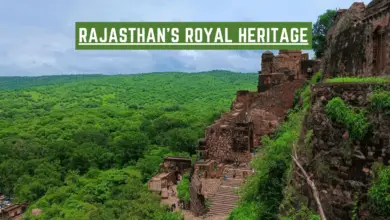

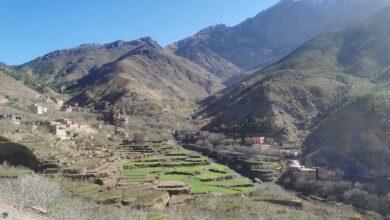
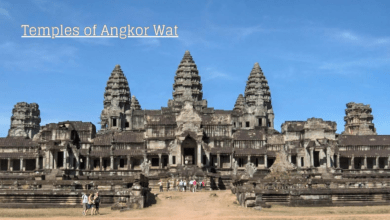
Facebook Comments